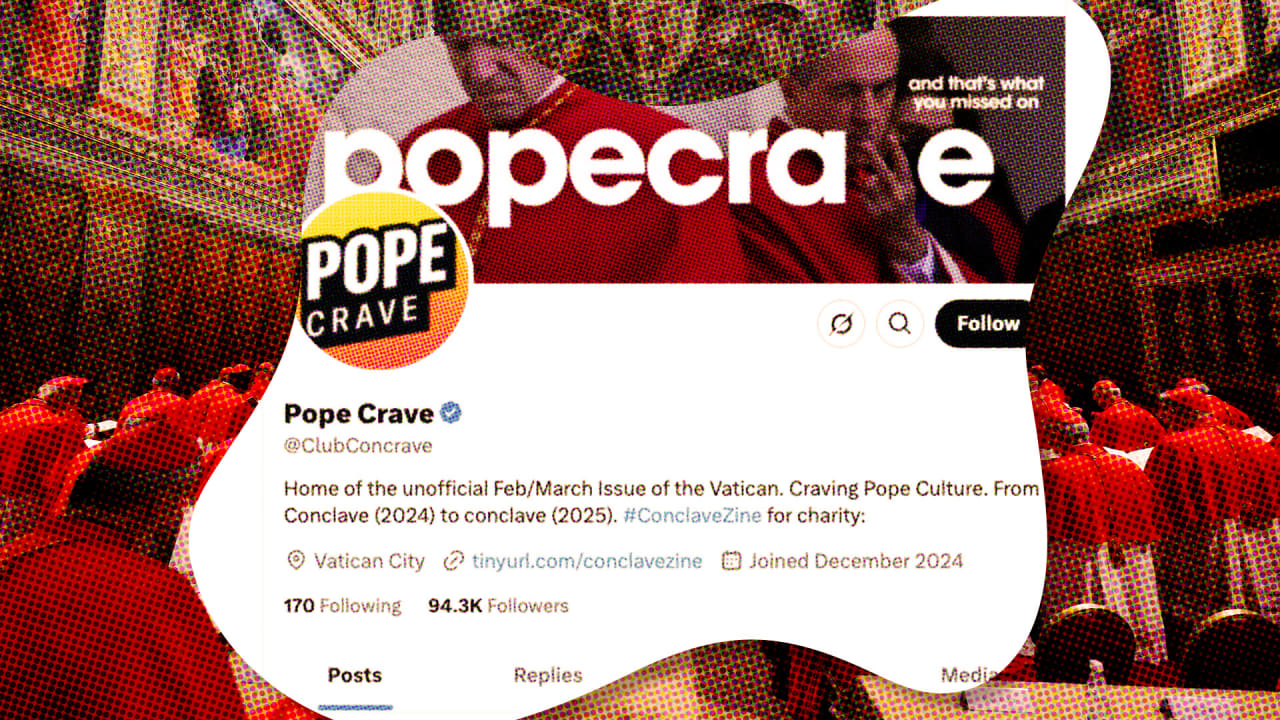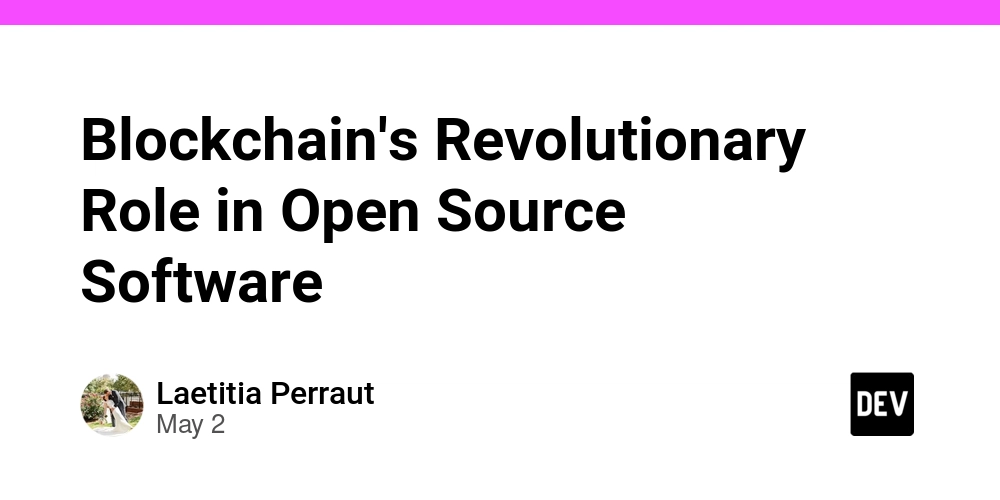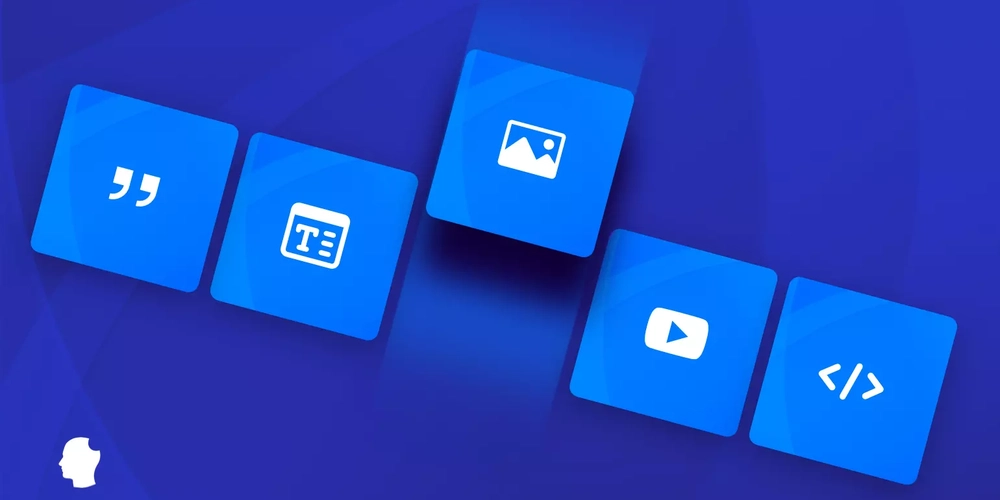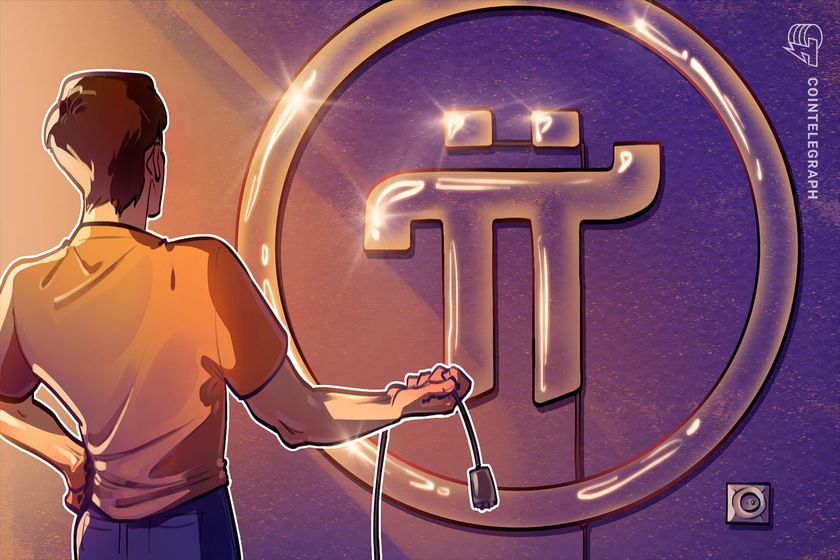Insights into Tokenization and Open Source Sustainability
Abstract: This post explores how tokenization is revolutionizing the sustainability of open-source projects. We dive into the background of open-source funding challenges, define key blockchain and tokenization concepts, discuss core features, and present practical use cases with real-world examples. Furthermore, we analyze the challenges and limitations facing decentralized funding models and conclude with a future outlook on innovations that hold promise for open-source sustainability. Throughout the post, we include links to authoritative resources like Basic Attention Token (BAT), Filecoin, and Gitcoin, as well as the Original Article for deeper insights. Introduction Open-source projects drive innovation and collaboration in the software world. However, sustaining these projects financially remains one of the most pressing challenges for developers and communities alike. Recently, tokenization—a blockchain-based mechanism—has emerged as an innovative approach to tackle funding hurdles. By leveraging tokens to reward contributors and incentivize development, tokenization creates new revenue models that can ensure perpetual support for open-source initiatives. Tokenization not only democratizes funding, but it also introduces transparency and scalability in open-source ecosystems. In this blog post, we unpack these ideas, explaining how blockchain technology, NFTs, and decentralized funding platforms are being used to secure open-source sustainability. Background and Context The Evolution of Open Source Funding Traditionally, open-source projects have relied on donations, grants, corporate sponsorships, or crowd-funding initiatives. Despite the successes of platforms like Gitcoin and GitHub Sponsors, funding gaps persist, hindering innovation. To bridge these gaps, blockchain and tokenization have been introduced as a means to create new, dynamic funding models that reward contributions in real time. Key Definitions Tokenization: The process of converting rights to an asset or an idea into a digital token on a blockchain. It can represent utility, access, or ownership rights. Blockchain: A decentralized ledger technology that offers transparency, immutability, and security, making it a suitable foundation for tokenized economies. NFTs (Non-Fungible Tokens): Unique digital assets often used to represent ownership or reward contributions in the digital and creative spaces, including open source. Open Source Sustainability: The continuous funding and support required to keep open-source projects viable, innovative, and free from financial uncertainties. Ecosystem Context Open-source communities often lack clear compensation methodologies. With tokenization, projects can adopt decentralized models wherein contributors receive tokens for their code, documentation, or community support. These tokens can be traded on the blockchain or used to access exclusive features, thus creating a symbiotic relationship between developers and end-users. Recent resources, such as The Role of NFTs in Open Source Rewards, further illustrate how blockchain technology is not only transforming digital art but also the sustainability of open source. Core Concepts and Features Tokenization in open source revolves around several interrelated components. Below, we break down the core concepts and features that define this emerging funding model: Decentralized Funding Platforms One of the standout examples is Gitcoin, which leverages quadratic funding mechanisms to distribute grants fairly. This system uses token-based rewards to allow each community member's input to influence funding decisions. With decentralized platforms, funding decisions are often more democratic, transparent, and secure. Reward Mechanisms via Tokens and NFTs Tokens and NFTs are being used to reward open-source contributors in many creative ways: Utility Tokens: These provide holders with operational benefits, such as voting rights in community decisions. For instance, the Basic Attention Token (BAT) rewards users for their engagement while safeguarding privacy. NFT Rewards: NFTs can serve as badges of honor or digital certificates to recognize unique contributions. This approach not only motivates developers but also turns their contributions into collectible assets. Innovative Project Models Projects like Filecoin demonstrate how decentralized storage networks can benefit from tokenization. Filecoin’s model rewards users who offer digital storage space, thereby creating a robust ecosystem fueled by community contributions. Similarly, initiatives in tokenizing open source licenses and community governance are reshaping the ways patents and intellectual property are handled within the industry. Overlaps and Integration The interdisciplinary overlaps between tokenization and open-source licensing create a multi-layered revenu

Abstract:
This post explores how tokenization is revolutionizing the sustainability of open-source projects. We dive into the background of open-source funding challenges, define key blockchain and tokenization concepts, discuss core features, and present practical use cases with real-world examples. Furthermore, we analyze the challenges and limitations facing decentralized funding models and conclude with a future outlook on innovations that hold promise for open-source sustainability. Throughout the post, we include links to authoritative resources like Basic Attention Token (BAT), Filecoin, and Gitcoin, as well as the Original Article for deeper insights.
Introduction
Open-source projects drive innovation and collaboration in the software world. However, sustaining these projects financially remains one of the most pressing challenges for developers and communities alike. Recently, tokenization—a blockchain-based mechanism—has emerged as an innovative approach to tackle funding hurdles. By leveraging tokens to reward contributors and incentivize development, tokenization creates new revenue models that can ensure perpetual support for open-source initiatives.
Tokenization not only democratizes funding, but it also introduces transparency and scalability in open-source ecosystems. In this blog post, we unpack these ideas, explaining how blockchain technology, NFTs, and decentralized funding platforms are being used to secure open-source sustainability.
Background and Context
The Evolution of Open Source Funding
Traditionally, open-source projects have relied on donations, grants, corporate sponsorships, or crowd-funding initiatives. Despite the successes of platforms like Gitcoin and GitHub Sponsors, funding gaps persist, hindering innovation. To bridge these gaps, blockchain and tokenization have been introduced as a means to create new, dynamic funding models that reward contributions in real time.
Key Definitions
- Tokenization: The process of converting rights to an asset or an idea into a digital token on a blockchain. It can represent utility, access, or ownership rights.
- Blockchain: A decentralized ledger technology that offers transparency, immutability, and security, making it a suitable foundation for tokenized economies.
- NFTs (Non-Fungible Tokens): Unique digital assets often used to represent ownership or reward contributions in the digital and creative spaces, including open source.
- Open Source Sustainability: The continuous funding and support required to keep open-source projects viable, innovative, and free from financial uncertainties.
Ecosystem Context
Open-source communities often lack clear compensation methodologies. With tokenization, projects can adopt decentralized models wherein contributors receive tokens for their code, documentation, or community support. These tokens can be traded on the blockchain or used to access exclusive features, thus creating a symbiotic relationship between developers and end-users. Recent resources, such as The Role of NFTs in Open Source Rewards, further illustrate how blockchain technology is not only transforming digital art but also the sustainability of open source.
Core Concepts and Features
Tokenization in open source revolves around several interrelated components. Below, we break down the core concepts and features that define this emerging funding model:
Decentralized Funding Platforms
One of the standout examples is Gitcoin, which leverages quadratic funding mechanisms to distribute grants fairly. This system uses token-based rewards to allow each community member's input to influence funding decisions. With decentralized platforms, funding decisions are often more democratic, transparent, and secure.
Reward Mechanisms via Tokens and NFTs
Tokens and NFTs are being used to reward open-source contributors in many creative ways:
- Utility Tokens: These provide holders with operational benefits, such as voting rights in community decisions. For instance, the Basic Attention Token (BAT) rewards users for their engagement while safeguarding privacy.
- NFT Rewards: NFTs can serve as badges of honor or digital certificates to recognize unique contributions. This approach not only motivates developers but also turns their contributions into collectible assets.
Innovative Project Models
Projects like Filecoin demonstrate how decentralized storage networks can benefit from tokenization. Filecoin’s model rewards users who offer digital storage space, thereby creating a robust ecosystem fueled by community contributions. Similarly, initiatives in tokenizing open source licenses and community governance are reshaping the ways patents and intellectual property are handled within the industry.
Overlaps and Integration
The interdisciplinary overlaps between tokenization and open-source licensing create a multi-layered revenue model. For example:
- Physical vs. Digital Rewards: Developers can receive tokens convertible into fiat or be rewarded with digital certificates (NFTs) that hold market value.
- Community Governance Models: Token holders can participate in decision-making processes, aligning individual goals with the collective vision of the open-source project.
- Transparency and Trust: With blockchain’s immutable record-keeping, all transactions and rewards become transparent, ensuring fair and accountable funding.
Below is a table comparing key aspects of traditional funding methods and token-based models for open-source software:
| Aspect | Traditional Funding | Tokenization Model |
|---|---|---|
| Funding Source | Donations, sponsorships, grants | Decentralized funding, token rewards, NFT-based incentives |
| Transparency | Often limited; third-party intermediaries | High – blockchain-based, transparent transaction records |
| Incentives for Contributors | Monetary donations; indirect recognition | Direct token rewards, voting rights, NFT recognition |
| Flexibility and Scalability | Limited by traditional financing methods | Scalable, global reach, and adaptable funding mechanisms |
| Community Governance | Centralized decision-making | Decentralized, with token holders influencing decisions |
Applications and Use Cases
Tokenization is not only a theoretical process—it is actively applied in several innovative projects. Here are some practical examples:
1. Rewarding Contributions in Open Source
Open source initiatives like Gitcoin showcase how tokenization can help maintain projects. In these platforms:
- Developers submit code or documentation and receive tokens proportional to their contribution.
- Token rewards can be traded or reinvested, ensuring continuous developer motivation.
- An integrated system combines token rewards with NFTs to create verifiable contribution records.
For more practical insights on supporting open source funding, see How to Donate on Gitcoin: A Comprehensive Guide.
2. NFT Incentives for Unique Contributions
NFTs provide a unique way to reward and recognize developers. In this model:
- Specific NFTs are minted to honor critical contributions.
- Developers market and trade their NFTs, adding financial benefits to their open-source work.
- This concept has been widely discussed in articles like The Role of NFTs in Open Source Rewards.
3. Decentralized Storage and Service Models
Projects such as Filecoin integrate tokenization into decentralized storage systems. In this context:
- Users provide storage space and, in return, receive tokens.
- The secure, blockchain-driven model ensures transparency.
- This model illustrates how tokenization can be an engine for both open source sustainability and enterprise-level applications.
Challenges and Limitations
While tokenization presents numerous opportunities, there remain significant challenges and limitations that need addressing.
Technical Limitations
- Scalability Issues: As more tokens and transactions are managed on blockchains, scalability becomes a major technical challenge. Network congestion and high transaction fees can impede smooth operations.
- Interoperability: Ensuring that token platforms and applications work seamlessly across different blockchains is essential. Projects like arbitrum-and-open-source-license-compatibility highlight integration challenges.
- Security Risks: Although blockchain enhances security, smart contract vulnerabilities and potential hacking incidents still pose risks that must be addressed through stringent audits and regular updates.
Adoption Barriers
- User Education: The concept of tokenization and blockchain is new to many developers and community members. Effective education and communication strategies are necessary to facilitate widespread adoption.
- Market Volatility: Token values can be highly volatile, which might deter long-term commitments by contributors or sponsors. This volatility could impact the stability of funding models.
- Regulatory Uncertainty: The legal landscape surrounding cryptocurrencies and tokenization is continually evolving. Regulatory changes may affect the operation of platforms relying on these new technologies.
Community and Governance Concerns
- Centralization Risks: While decentralized funding aims to distribute power, improper implementation can lead to concentration of tokens among a few investors or early adopters.
- Complexity in Decision-Making: Decentralized governance requires a clear framework for making decisions. Without effective protocols, projects may encounter gridlock or misaligned priorities.
A useful bullet list summarizing key challenges includes:
- Scalability and network congestion
- Interoperability across various blockchains
- Market volatility of tokens
- Regulatory and legal hurdles
- Need for community education and robust governance frameworks
Future Outlook and Innovations
Tokenization and open source sustainability are still in their early days. However, several trends and innovations point toward exciting future developments:
Advancements in Blockchain Technology
Continuous improvements in blockchain technology are expected to alleviate current scalability issues. With innovative solutions like layer-2 networks and consensus mechanisms, the efficiency and transaction throughput of tokenized networks will improve.
New Funding Models and Hybrid Approaches
Future models might blend conventional funding with tokenization to create hybrid systems. These systems could offer both immediate rewards in the form of tokens and longer-term stability based on traditional sponsorships. As suggested in Open Source Monetization Challenges, Strategies, and Future Trends, combining various revenue models might pave the way for more resilient open-source ecosystems.
Regulatory Clarity and Standardization
As governments and regulatory bodies gain a deeper understanding of blockchain technology, clearer guidelines will emerge. This regulatory clarity will help secure token economies while ensuring fair competition and investor protection. Standardization across projects may also promote interoperability and reduce technical barriers.
Expansion of Decentralized Governance
Increasingly, decentralized governance models will empower token holders to make strategic decisions. Projects will further refine these models by integrating advanced voting mechanisms and leveraging smart contracts for decision automation. Articles such as Unveiling the Power of GNU LGPL 2.0 in Today’s Open Source Landscape underscore that strong licensing combined with community-driven governance might be key to sustained open-source growth.
Practical Innovations in NFT Implementation
The role of NFTs in recognizing contribution and ownership is growing. Future frameworks may not only reward individual milestones but also enable cross-project collaborations where NFTs can function as access keys or reputation tokens. These innovations will serve as a bridge between digital art, open source contributions, and broader blockchain applications.
Additional Resources and Further Reading
For readers interested in exploring further, here are a few authoritative links:
- Learn how Basic Attention Token (BAT) integrates tokenization for privacy and user rewards.
- Discover Filecoin’s decentralized storage solution at Filecoin.
- Understand community-driven open source funding with Gitcoin.
- Delve deeper into the subject with the Original Article on Sustainability of Open Source through Tokenization.
- For insights into NFT-based rewards, check out The Role of NFTs in Open Source Rewards.
From the developer community on Dev.to, readers may also find valuable perspectives:
- How to Donate on Gitcoin: A Comprehensive Guide to Supporting Open Source
- Open Source Monetization Challenges, Strategies, and Future Trends
- Unveiling the Power of GNU LGPL 2.0 in Today’s Open Source Landscape
Summary
In summary, tokenization is emerging as a powerful tool to ensure the financial sustainability of open-source projects. By integrating blockchain technology, decentralized funding models, and NFT-based rewards, the traditional hurdles of funding and recognition in open source are being overcome. Despite challenges related to scalability, regulatory uncertainty, and market volatility, ongoing innovations promise to make these models robust and widely adopted.
Key takeaways include:
- Tokenization offers a direct way to reward contributions with tokens and NFTs.
- Decentralized platforms such as Gitcoin empower the community and democratize funding.
- Technical challenges and regulatory uncertainties remain, but ongoing blockchain innovations and hybrid funding models are paving the way for a sustainable future.
- Educational initiatives and improved governance frameworks will be essential to harness these new technologies fully.
As tokenization continues to grow, it holds the potential not only to transform open source funding but also to create a more resilient ecosystem where developers, users, and investors share the benefits of innovation and collaboration.
With a future that promises enhanced transparency, stronger community governance, and innovative revenue streams, tokenization is set to reshape the landscape of open-source sustainability. By staying informed and engaged with these trends, developers and stakeholders can collaborate to build a more secure, equitable, and vibrant ecosystem for open source.
This comprehensive guide provides technical depth while remaining accessible, ensuring that both seasoned developers and newcomers can appreciate the transformative potential of tokenization for open source.









































































































































































![[The AI Show Episode 146]: Rise of “AI-First” Companies, AI Job Disruption, GPT-4o Update Gets Rolled Back, How Big Consulting Firms Use AI, and Meta AI App](https://www.marketingaiinstitute.com/hubfs/ep%20146%20cover.png)










































































































































































































































































_Aleksey_Funtap_Alamy.jpg?width=1280&auto=webp&quality=80&disable=upscale#)
_Sergey_Tarasov_Alamy.jpg?width=1280&auto=webp&quality=80&disable=upscale#)


























































































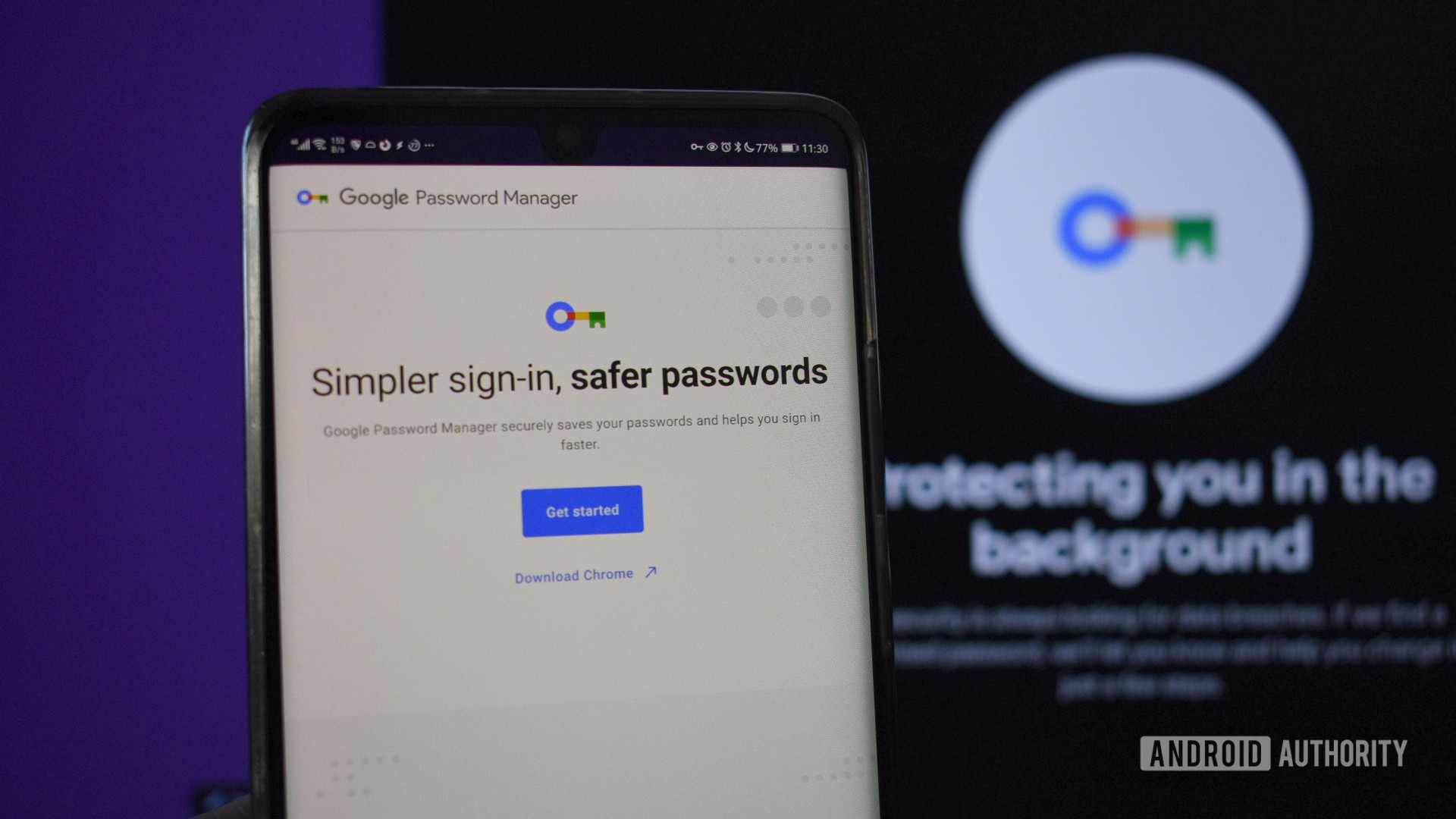




















![Apple Foldable iPhone to Feature New Display Tech, 19% Thinner Panel [Rumor]](https://www.iclarified.com/images/news/97271/97271/97271-640.jpg)
![Apple Developing New Chips for Smart Glasses, Macs, AI Servers [Report]](https://www.iclarified.com/images/news/97269/97269/97269-640.jpg)
![Apple Shares New Mother's Day Ad: 'A Gift for Mom' [Video]](https://www.iclarified.com/images/news/97267/97267/97267-640.jpg)
![Apple Shares Official Trailer for 'Stick' Starring Owen Wilson [Video]](https://www.iclarified.com/images/news/97264/97264/97264-640.jpg)










































































